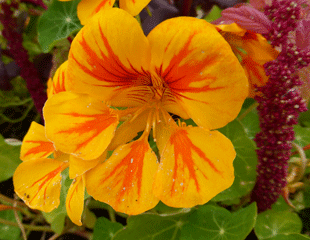
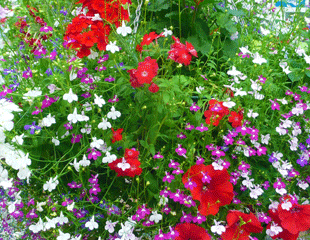
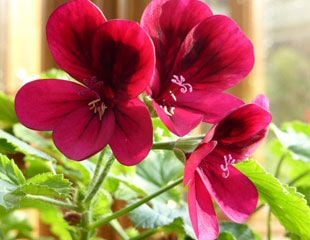
When to plant out bedding plants
Bedding plants are often on sale in garden centres and on line from early in the year March onwards. Don't be mislead into thinking because these plants are on sale its time to plant them out, it definately is not. Almost all bedding plants are tender (which means they are not frost hardy,)it is very important that bedding plants are not put or planted outside until the risk of frost has passed. Most areas of the UK are frost free by the end of May, which means, although it is tempting to plant out earlier, it is best left until May.
It is not just northern areas which can suffer cold in May. Remember May 2017 when there was a sudden and unexpected frost and temperatures dropped to -6. This frost was widespread, damaging gardens and crops, including severe damage to the southern grape harvest.
Only plant out plant out earlier if you are ready to cover with fleece or cloche in the event of a frost. It is not just that a significant frost can kill a tender plant. These plants do not like the cold and even a chilly spell will knock them back. Knowing if a plant is fully frost hardy or not will also help when selecting plants for the garden.
Tips about growing Bedding plants
If you have a greenhouse or lean to and you can shelter plants under glass until warm weather arrives.
A good tip is to plant up a hanging basket or tub and grow it on in the greenhouse. This gives the plants time to settle and establish roots in the container, in the snug warm of a greenhouse. Bedding plants grown under glass will need to be "hardened" off before planting out. This means getting the plant accustomed to the outside conditions and not moving it straight out from the calm, still and warm greenhouse ( yours or at the garden centre) conditions to the less perfect outside weather. Move the trays of bedding plants outside, starting on milder days and leaving out for longer as the weather improves until they are out all the time and fully accustomed to our weather.
Bedding plants are attractive to slugs, some more than others. For example, Marigolds are slug magnets, but Calendula are not. Protect with slug protection, such as pellets or slug traps. Check out Best Bedding plants for ideas on which bedding plants are slug resistant and which are low maintenance.
Bedding plants have to grow and produce lots of flowers quickly, in just a matter of months. It follows they will do best in good compost and will always benefit from feeding during the growing season.
Dead heading is essential to keep bedding plants flowering. In summer, when in full bloom, dead heading may need to be done several times a week depending on the plant. Some bedding plants are easier to grow than others. For example, Mesembryanthemum common name ice plant is a fabulous showy bedding plant, bottom left, but look at the dead heads in the image next to it removed in just one day. If a plant is not dead headed, it will cease to flower, but taking off 50+ spent flowers is time consuming. Compare that with a Pelargonium, (image 3 top right) which needs much less dead heading and Nasturtiums, 1st image top left, hardly need any attention.
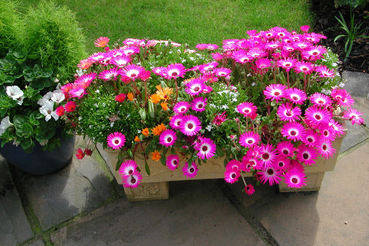
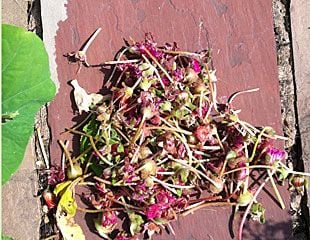
How to Pinch out growing points
Most bedding plants, left to their own devices, have a tendency to become leggy with lots of stems and not enough flower. To prevent this, particularly at the beginning of the growing season, and periodically during the summer, "pinch out" the growth point to make the plant bush. How to do this is shown in the images below and the plant in question is a Petunia, which has a tendency to become leggy.
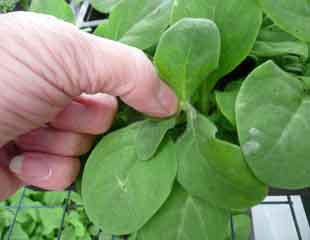
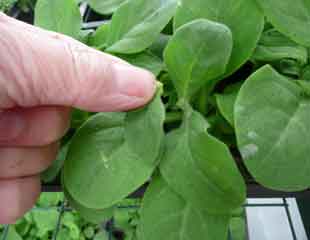
Bedding plants which are slug resistant
There is quite a bit of variation in how attractive bedding plants are to slugs, and some are slug resistant. This is worth bearing in mind when selecting your plants.
Very attractive to slugs are Marigolds, Petunia, Verbena, Nicotina, and plants with tender young growth are attractive, so you need slug protection. Tips on slug protection and how to repair a slug ravaged plant. If the slugs do eat most of your Petunia, don't despair, it may be capable of rescue.
Slugs do not show a lot of interest in Pelargonium, Fuchsia, Begonia, Gazanias, Calendula are a suitable alternative to Marigolds which slugs love. Nasturtium is not troubled by slugs, and Lantana attracts bees and butterflies but not slugs. To grow a wide variety of bedding, plants check out ways to beat the slugs. Accept you will lose some plants and have some "spares" in the greenhouse. Also consider mixing tubs of bedding with less hardy perennials such as the French lavender and Heliotrope which are less attractive to slugs.
